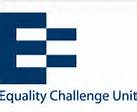The following blog post was written by Samantha Chester following her attendance at the EUNIS 2019 conference in Trondheim. The post aims to give you some food for thought on how to evaluate technology used in your learning and teaching. Surveys! The most talked about evaluation tool at the conference was the trusty survey. IRead more
We are delighted to announce the themes for our annual Learning and Teaching Conference, which is being held in West Park Teaching Hub on 27th June 2018. The themes are: Digital Literacy Engaging students in the learning process Student Wellbeing How do students learn? The call for abstracts of approximately 300 words is now openRead more
In this post, Dr. Sweta Ladwa provides an update on her 2016 Teaching Innovation Award and explains how peer based learning can be used within a laboratory based teaching environment. What is the problem, which you are trying address? In a laboratory-teaching environment, students are very much focused on getting to the end product of an experiment (whetherRead more
Sometimes we overlook the obvious, so eager are we to begin our taught sessions where time is at a premium, and it takes our students to pull us up short.
We know who we are, we know a university as prestigious as Loughborough would not ask us to teach without checking our credentials for such a key role, and yet sometimes we forget the most basic of essentials.
Students from PHIR and Social Sciences collaboratively exploring with staff ways of engaging students when teaching large groups said respect was essential, and produced one simple tip. “To earn our respect, tell us who you are. Please introduce yourself.”
Flipping – a way to develop student deeper learning and engagement as well as higher quality work or too good to be true?
Speakers and the Art of Flipping workshop showed flipping can be a useful tool to support the development of deep rather than surface learning. This brief look at the workshop organised under a Teaching Innovation Award by Dr. Mark Jepson (Materials), Dr. Simon Hogg (Materials) and Dr. Nicola Jennings (Chemistry) looks at what flipping is, and how it could work for you and more importantly for your students.
What is flipping?
Flipping is part of a process which moves from didactic knowledge transmission in large lectures to use contact time for the lecturer to bring his/her knowledge to bear on those concepts or specifics that students have identified as problematic. Students pre-engage with the transmission of knowledge before the lecture, either by reading, and/or listening to a podcast or video of material. They take ownership of the content by identifying what they find clear and what they do not.
Some academics may already be taking just this approach. However, for those who want to explore the idea the workshop was a great introduction.
Dr. David Dye, Reader in Metallurgy at Imperial College, records 15-minute single-concept videos in his office with a white board (and all-important board rubber). He posts them online and then asks students to complete a short online quiz/test after viewing. The last question asks what they want further explained. He then addresses those areas in the lecture, getting students to peer instruct each other, explaining their own understanding. As they discuss Dye moves round the room, identifying areas of confusion and explanations given before delivering his summation. In this way each student is directly, actively involved in their learning.
The Equality Challenge Unit (ECU), a body that centres on advancing equality and diversity across universities and colleges, has updated its online resources for academics. As the ECU says, these tools are aimed at “ensuring that higher education institutions are inclusive and accessible, and encourage good relations between the diverse groups that study, work, or otherwise engage with them”.Read more
Delivered by the University of Saskatchewan (UofS), the Introduction to Learning Technologies course referred to in previous related posts this spring – i.e. Truly taking the MOOC and Truly taking the MOOC (Part 2) – has now concluded. Indeed, those of us participating in this, as well as a number of comparable courses over the past year, tabled a paper at Quality EnhancementRead more
The tandem takes centre stage in illustrating a key question in the partnership of learning: which seat do each of us give our learners and which do we take for ourselves? The analogy formed part of Marcia Baxter Magolda’s talk at a recent Lifewide Learning event in London, where the conference artist illustrated her thoughts.Read more
USE OF IMAGES The heart of my challenge to Death by PowerPoint (DBP) is images. Many others use pictures; most frequently it is an image that accompanies text and is descriptive. It normally is a subset to the slide and the text. My use of images inverts this. I use images as the illustrator andRead more
This blog is concerned with using PowerPoint (PPT) better in lecturing. By better, I mean in accordance with the latest scholarly research in the use of Multi Media Learning (MML); in conjunction with emerging practice in the world of business; and in rejection of the terminally embarrassing ‘Death by PowerPoint’. The blog can be readRead more

